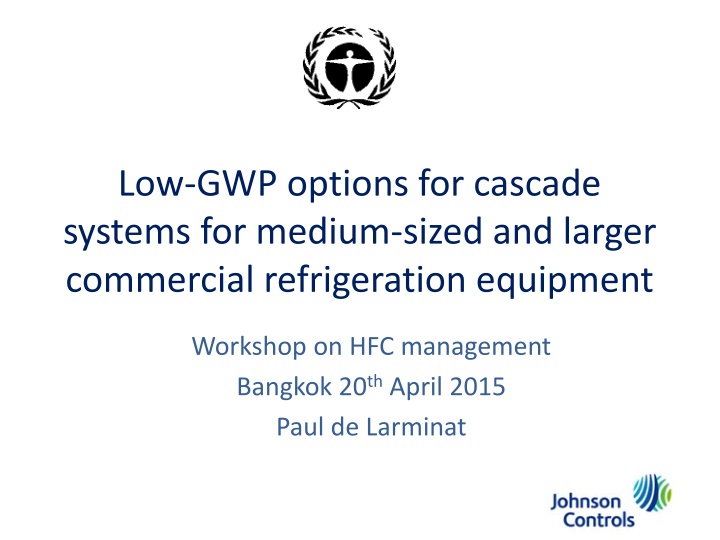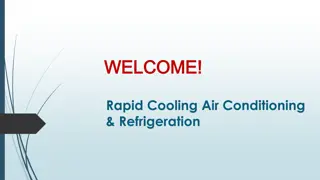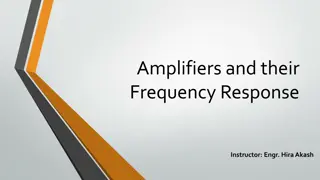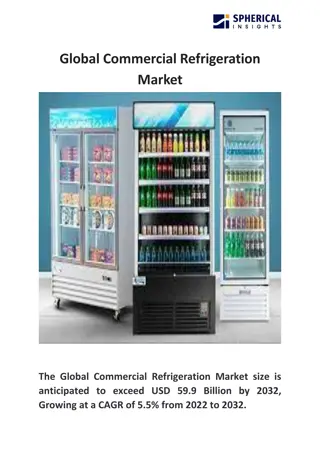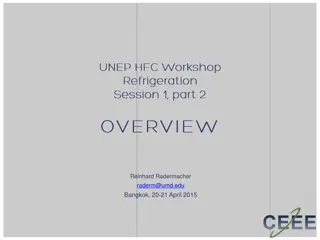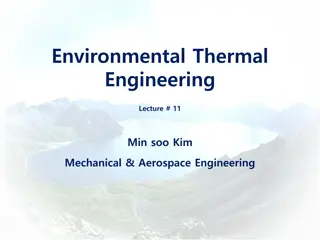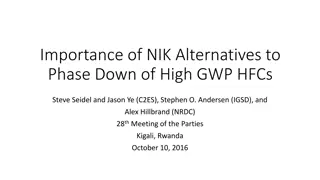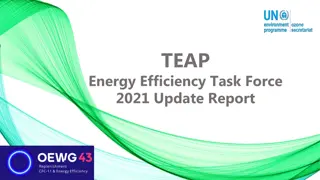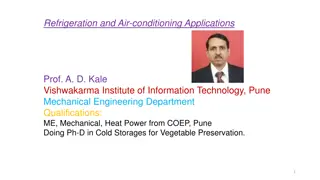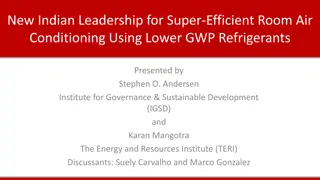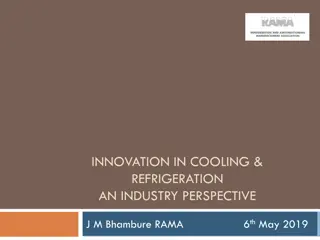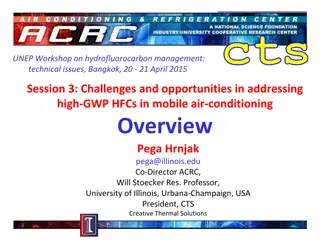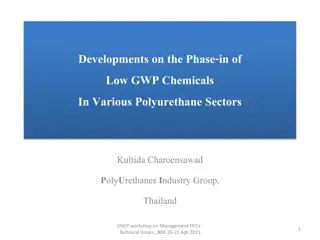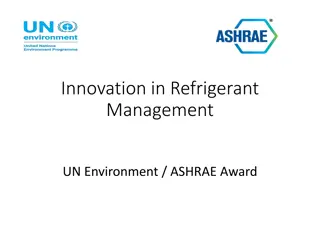Low-GWP Options for Cascade Systems in Commercial Refrigeration
Workshop on HFC management focusing on the use of cascade systems with low-GWP alternatives for medium to large commercial refrigeration units. Explore the need for dual temperature levels, unsatisfactory options, and a possible alternative using cascade LT CO2 and MT chiller systems for improved efficiency and reduced emissions.
Download Presentation

Please find below an Image/Link to download the presentation.
The content on the website is provided AS IS for your information and personal use only. It may not be sold, licensed, or shared on other websites without obtaining consent from the author.If you encounter any issues during the download, it is possible that the publisher has removed the file from their server.
You are allowed to download the files provided on this website for personal or commercial use, subject to the condition that they are used lawfully. All files are the property of their respective owners.
The content on the website is provided AS IS for your information and personal use only. It may not be sold, licensed, or shared on other websites without obtaining consent from the author.
E N D
Presentation Transcript
Low-GWP options for cascade systems for medium-sized and larger commercial refrigeration equipment Workshop on HFC management Bangkok 20th April 2015 Paul de Larminat
Benchmark in supermarkets: direct systems ( D-X ) The need: 2 temperature levels for goods: - MT 0 to +8 C for fresh goods Evaporation -10 to -15 C - LT -18 to -25 for frozen food Evaporation -35 to -38 Non toxic / non flammable (A1) fluids desired inside shop. Traditionally used fluids: - CFC s: R12 for MT; R-502 for LT - Transition: HCFC R-22 for both stages - HFC: 404A dominant for both stages Usually single stage 75 to 80% of the charge in MT circuit. High leak rates + very high GWP = Large CO2eq emissions
Unsatisfactory options Indirect systems Same direct system With lower GWP blend Like R-407A etc Glide in extended systems Still high GWP for A1 (about 2000) poor efficiency High pumping power + Additional heat exchangers = bad efficiency Poor TEWI In both cases
An possible alternative: cascade LT CO2 + MT chiller For LT: D-X CO2 system - Only CO2 (or brine) in sales area. - Excellent efficiency of CO2 at LT. - Moderate pressure for CO2 For MT: glycol chiller about -10 C. Glycol is used: - For fresh goods with indirect system, - For condensation of the LT CO2 circuit. Advantages: - The fluid of the chiller is easily optimized to the climate conditions; e.g. R-134a or equivalent HFO or blend in warm climate. - The chiller can be low cost, standard (or close to) A/C chillers. - Refrigerant charge and leak rate of chillers is low low direct emissions (about 1% of benchmark D-X 404A). - A1 fluid not an obligation for the chiller (confined in machine room). - If retrofit is needed later, replacing the chiller only is limited damage. Other options for MT circuit are possible. The key is to use CO2 for LT.
